Every so often a comic arrests you on the spot, and you’re drawn wholly into a new world, style, and story. It happens sometimes completely by chance, which is what happened when I first came across the webcomic Decrypting Rita, by Margaret Trauth. Starting out with a single world, the series quickly develops and shows us multiple simultaneous realities at once – as the series is told in a horizontally scrolling format, Trauth is able to really experiment with the way stories can be told, and the use of design, colour, pacing is utterly engrossing.
I was left with a distinct need to find out more about how the story came about, and how this comic is put together. And happily, she was more than happy to talk to me about her work, and how she processes it. This is one of the most interesting interviews that I’ve had the pleasure to do for The Beat, I would suggest – and I hope you find it as fascinating as I did!
Steve: Probably your best known work currently is the side-scrolling webcomic – and Kickstarter success – Decrypting Rita. This is one of those stories which works best the less you know about it perhaps, but how would you describe the general premise of the story?
Margaret: It’s about a robot lady who’s dragged outside of reality by her ex-boyfriend. She’s got to pull herself together across four parallel worlds before a hive-mind can take over the planet.
That is, assuming it hasn’t already.
Steve: What first stands out is obviously the nature of the comic, which is told in a side-scrolling landscape format. What made you decide to use that format for the story?
Margaret: The core formal consideration here is that I’m telling two or more stories in parallel on every single page. That was one of the initial things I wanted to explore with this comic. Initially I was going to have more timelines splitting off from each other, ala Rebecca Dart’s lovely little book “Rabbit Head”, but the story didn’t end up supporting that very well. My initial doodles that became the seed for Rita were based around traditional portrait pages!
The landscape format comes from the medium I’m doing it for. It’s presented first on the screen, and reading portrait comics on a screen is a real pain in the butt. You’re constantly scrolling up and down, you can never really appreciate the design of the whole page unless you have a huge monitor. My last project solved this dilemma with square pages, which I largely thought of in terms of the double-page spreads; for this one, I just think about everything that way. I print each page you see on-screen as a spread when I make the books; there’s a big gutter down the center where nothing important to the story can ever be placed.
As the comic went on, it started sprawling across the page boundaries. I think that’s an inevitable consequence of those two choices; it’s really hard to fit anything like a complete thought into half of one landscape page. So the panels started slipping across the edges to hint to the reader that the thought continued after a page turn.
Steve: Do you see digital comics less as a like-for-like equivalent of the standard 20-page print comic; and more of a place to experiment like this on page layouts, formats, and structure?
Margaret: No. You can do some wild things in the constraints of the standard page. Dave Sim did some really amazing things in ‘Cerebus’ (I got lucky; ‘Reads’ coincided with a time in my life when I rarely visited a comic shop, so I could enjoy his experiments without the lingering taint of the raging misogyny that he really laid bare in that story arc.). Phil Foglio’s done some gorgeously designy layouts that really served the story. Matt Howarth’s early work really broke comics down into its component parts and reassembled it into something strange and glorious.
There is more freedom to experiment once you shed the unnecessary constraint of a standard size with its roots in what was the cheapest thing that worked. My early comics loves included broadsheet-sized comics like Little Nemo and Krazy Kat (thanks to the wonderful Smithsonian Book of Newspaper Comics), and all the Asterix albums I could get my hands on; I’ve been quite impressed by Chris Ware’s modern broadsheet-sized work, despite my disinterest in stories about sad, lonely people living empty lives. I’ve seen comics done as related panels on cards, that the reader is invited to shuffle. You can do all kinds of crazy things on paper.
I don’t think working digitally is inherently experimental. There’s lots of people doing very traditional stuff; a lot of the lore of How To Succeed In Web Comics is from people working in the form of the daily comic strip, which is an incredibly conservative and limiting format. There’s just no room to do wild layouts there. There are certainly exciting new possibilities in the computer – infinite canvas, limited animation, hypertext, minigames, who knows what – but for every When I Am King or Homestuck, there’s plenty of successful web-based work that obeys much the same physical limits as anything DC or Marvel publishes.
There’s also lots of things left to do in physical paper. I’ve never seen anyone do what I’m doing with spot gloss in the printed version of Rita. I suddenly wonder if anyone’s ever done a comic with pop-up elements, for instance! That would be totally rad. Turn a wheel to see a hidden succession of panels! Follow a character through a teetering house, opening doors along with them! Filing that idea away for, um, 2017 or so, unless someone beats me to it. Please feel free to beat me to it, because I really want to see this but don’t want to have to learn paper engineering and do it myself.
Steve: As the comic scrolls left to right, the reader is responsible for investing momentum into your story, in a sense – they’re actively involved in continuing the narrative. When planning the comic, was this something you had in mind?
Margaret: Yes and no. Not explicitly, but in some ways, this comic is my response to the chapter on time in Scott McCloud’s “Understanding Comics”. The reader’s actively involved in continuing the narrative in every comic; giving you all these parallel timelines to read really makes it obvious. How do you read it? Do you try to read each page as a whole? Do you follow one timeline for a few pages, then jump back and follow another? Do you skip around in the book at utter random?
The whole story is laid out in space before you, already crystallized. It’s purely the observer that gives it any sequence of time. Every single comic book is like this. I’m just rubbing your face in it.
From Understanding Comics, by Scott McCloud
It is possibly at this point that I should mention that parts of Rita come from sudden flashes of fully-formed imagery that I had while very, very stoned. I have spent time while stone cold sober trying to visualize reality from a point of view where time is merely an illusion created by our consciousness moving along the time dimension, and there’s definitely some of that going on in the comic.
I may have a hidden agenda in trying to get you to think this way – though at this point I think it’s mostly hidden from myself, as well. To borrow a line from the appendices of the Illuminatus! Trilogy, “This book has programmed the reader in ways that he or she will not understand for a period of months (or perhaps years).”
Steve: Momentum is typically described as one of the more difficult things to convey in art, and yet your action sequences seem incredibly kinetic. How do you lay out the pages? Do you work on paper first and then transfer to digital, or is this all done on a computer?
Margaret: It’s 99% digital. I’ll spend time doodling stuff in sketchbooks now and then, but it’s rarely more than just exploring the flow of the story. The real meat happens in Illustrator.
Illustrator really comes at the task of drawing from a different place than most programs; one of the things I really rely on for Rita is the fact that it has a huge drawing surface to work on, of which the “canvas” is merely one small rectangle. I’ll put the previous page just to the left of the canvas, and my sketches and dialogue for one page will often turn into sketches and dialogue for several pages, sprawling off to the right. I’ll copy all of this stuff into the next page, move them to the left one page’s worth (I do that so often that I have a macro for it), finesse the arrangement to best fit on the page, and repeat until I’ve run out of sketch.
(Oh, and for people who’ve played with Illustrator and wonder how on earth I get all these fluid drawings out of what most folks find to be a very precise and pernickety program? Go watch this video, in which I explain my key settings and methods. http://www.youtube.com/watch?v=VZE6e2UhQks)
A lot of the kineticness of the individual panels comes from my time in animation. A lot of animators fall in love with the “smear”, a kind of highly distorted drawing you’ll find when you start single-stepping a cartoon. It’s a stylized version of the blurs you see when single-stepping footage of fast real-world action; animators tend to start playing around and drawing, say, thirty eyes, twelve noses, and sixty-seven fingers in a single frame of a character crossing the screen. They can become these amazing pieces of abstract art, hidden beneath the surface. I loved drawing these, and I’ll take any excuse to stick one of these in my comics that I can.
More broadly, I kinda feel like my philosophy of drawing comics is that at least half of my action panels should be an inbetween rather than a key pose. Off-balance, in motion, distorted, fluid, alive.
Steve: The colouring as well comes across as a choice you made. This is a digitally coloured comic, and the colours separate – and conjoin – the various narratives which run alongside one another. How did you decide on the colouring palette for the series?
Margaret: A big part of beginning any large project, for me, is working out the limits of the colors; I’m often interested in using them as a channel for information and symbolism, rather than coloring things realistically. The number cards in my Tarot deck were done largely in black, white, and a color unique to the suit, with occasional mix-ins of the colors of the other suits. My unfinished comic “Five Glasses of Absinthe” has two (occasionally three) colors per spread mixed in whatever way I feel like, keyed completely off of the lead character’s emotional state.
For Rita, the initial image that popped into my head was what became the second page. A barely-defined Rita, climbing the side of a building. All in blues and whites. There was really no conscious thought to it; this was the fully-formed vision the Muses presented to me.
I decided to limit things to white and two colors per world, with no gradients, no transparency, and a minimum of hatching, in an attempt to keep things simple to draw. And then of course I promptly started doing some disgustingly complicated backgrounds now and then because I can’t keep things simple.
Steve: Thematically, was there an intentional purpose of your use for blue in the more sci-fi story, brown in the more [initially!] real-world story, and so on?
Margaret: Not really. The blue was a requirement from wherever the story came from in the first place. The other colors were chosen to contrast with it. There’s a certain amount of “what feels right for this world” going on – the world where Rita’s a dragon is orange and brown because I wanted it to feel closer to the red/yellow normal world, and the Skylands are green because, well, that’s kind of the color of the lead of Five Glasses of Absinthe, which also takes place there. Not that I ever actually used representative colors in that story either.
Steve: The more I read of the comic, the more craft I notice in your structure and design. What’s your artistic background? Who are your influences?
Margaret: The short version is “Animation burn-out”. I spent some time in animation school, and ended up hanging around Spümcø for several years. In a non-drawing role, for a bunch of complicated reasons. Which is part of why I drifted out of the industry. As I mentioned elsewhere in this interview, a lot of the action drawings in Rita are me finding an excuse to do wild smear drawings. I still miss animation sometimes but I wouldn’t go back to it; it’s a colossal amount of work and it’s really hard to do a project that’s not full of compromises due to the sheer number of people and dollars involved.
Influences. Hmm. Let’s be alphabetical here:
M.C. Escher, Fleischer Studios, Phil Foglio, Edward Gorey, Walt Kelly, John K., Matt Howarth, George Herriman, Al Hirschfeld, Carol Lay, Winsor McCay, Mike Mignola, Ralph Steadman, WB cartoons.
Not all of these are influences I wear on my sleeve, but I think they’ve all been important in shaping my work. Rita, in particular, I’d say owes the most to Howarth, Mignola, and WB shorts out of this list. Matt’s work is full of parallel-universe shenanigans; “Savage Henry”, about a dimension-hopping music act, is my favorite of his various ongoing projects. I would love to see some major reprint efforts of his stuff someday.
Mignola, obviously I learnt a ton about chiaroscuro from his work, which I think really informs how I’m doing the three-color worlds of Rita. And the WB stuff, well, it’s just your basic solid cartooning with occasional crazy action, you know?
Steve: Where did the idea for this series in particular come from? How did you get the initial premise of the story together and then thread it together into a comic?
Margaret: Ah, this is a dense little knot of history.
The short version is “I got really stressed during a breakup, and hid in my studio smoking a lot of weed until I moved out on my own”. The long version…
I’d moved from Boston to Seattle with my boyfriends. We were living in a house with several of their friends. It turned out I really, really didn’t get along with these friends, and there was a nasty breakup when my boyfriends went back on their promise to move out with me if it didn’t work out – living with them turned out to be a thing he really, really needed, just as much as not living with them turned out to be a thing I really, really needed.
I’d been working on a comic with one of those boyfriends. “Five Glasses of Absinthe”, a story about a thief who steals something too valuable to sell, fucks up all her relationships, and has a lot of kinky sex. We’d done the first chapter, and had the rest of it in various stages of completion, from “loose outline” to “second draft script and full chapter thumbnails”. And loose ideas for two sequels set later on in the same world. I was getting ready to really get going on the second chapter of it when the breakup happened.
It was definitely time for me to be making comics, but there was no way in hell I was going to work on Absinthe any more. I mean, I held a lighter to the corner of the folder full of notes on chapter 2 of that at one point. Until I managed to move out, I spent a lot of time alone in my studio, getting very stoned, drawing stuff, and pondering what on earth I was going to work on. I wasn’t ready to work on “The Drowning City”, a dark angsty story I’ve been slowly piecing together since 1995. I didn’t think the other ideas I’ve had kicking around for a while felt worth developing into a full comic, not just then. So I just kind of let the back of my brain work on it.
I got the idea for doing a comic with several parallel worlds. I did some little doodles thinking about interesting things I could do with the panels in that. I liked it but didn’t have a story, so I put it away.
I bought a copy of the catalog from the 1965 MOMA exhibit “The Responsive Eye”, a major exhibition of Op art. I’ve always been fascinated with Op ever since reading Ed Emberly’s “The Wizard of Op” as a kid; I’ve done a few pieces using Op techniques over the years. I did a drawing inspired by Yaacov Agam’s pieces that change based on your viewpoint, called “A Moment Outside”.
Its imagery came, in part, from a brief vision of being surrounded by an infinite tessellation of color-cycling stylized eyes, of the kind that keep showing up in Rita. Did I mention that I spent a lot of my time hiding in my studio being very very stoned? For a while I was followed around now and then by networks of watching eyes whenever I’d close mine. I’m really not sure of the objective reality of those, but it’s certainly an experience that fed into what would become Rita. I don’t want to get all Alan Moore here, but I’ve dabbled in chaos magic just enough to be really unsure about what “reality” really is. Really.
I started attending Indigo Blue’s school of burlesque dancing and learning a lot about how to better inhabit my body. There is definitely something of what I learnt there in the way I pose Rita in the early action sequence. The blue may or may not be a coincidence.
And then I read a discussion on Sean Witzke’s blog about Steranko’s first issue of Nick Fury, Agent of SHIELD (http://supervillain.wordpress.com/2010/11/17/seneca-vs-witzke-vs-steranko-vs-everything/). I took a healthy bong hit, and took a shower. As my mind wandered around, I had a sudden vision of what became the second page of Rita: a white, feminine silhouette – that I knew was a robot – climbing a building, rendered starkly in blues and whites. I finished my shower and went straight to the computer to draw this.
Then I typed “EDUCATING RITA” on it in a Saul Bass-looking font — I knew her name was Rita, I didn’t have to give this any thought, it was just there along with the image — and thought that sounded good until it was pointed out that there’s an Oscar-winning movie of the same name and maybe I should change it. I really don’t watch many movies. Maybe this was cryptomnesia, maybe not. Either way, I filled a page of my sketchbook with alternate titles; “Decrypting Rita” was the clear stand-out. It wasn’t until about halfway through the first book that I remembered that “Rita” is one of the several shortenings of my full name; I prefer the inexplicable short form of “Peggy” so it took a while.
I started drawing the next few pages and posting them on my blog. People liked them. So I started asking myself questions: who’s this woman? Who’s this voice giving her directions? What does she want? I really had no idea going in, but it feels like it came together surprisingly fast; it worked well with my vague ideas of doing a multiple-world comic, I pulled the eye images out of that riff on Agam and started using them for a mysterious Thing watching the goings-on from the space behind the panels. At times it really felt like it was writing itself. Tom was just going to be some hired assassin until he opened his mouth and revealed himself to be Rita’s crazy ex, then completely broke her reality for her because he thought she’d like it.
Ultimately, I think it may be some sort of exploration of various ideas of mystical transcendence and enlightenment. There’s a sequence I have planned for the end where I really hope to capture something of the slippery nature of the vast thoughts that can run through your mind when very high, and can’t be put into words afterwards. We’ll see if I can make it work in words, pictures, and the spaces in between them.
Somewhere in the first rush of pages I moved out of that bad situation to an apartment all by myself, alone in the University District.
Oh, and if you’re wondering, I mostly patched things up in that relationship. The ex I wrote Absinthe with is now my “ex with benefits”; I see him regularly, and he’s had some very thoughtful questions to ask about Rita’s story as it evolves. I’ll probably be resuming work on our collaboration once I finish Rita, along with doing that long-simmering angstfest I mentioned not wanting to work on so soon after a nasty breakup. Happy endings!
Steve: Do you think of yourself as an experimental artist? Your design – especially once we reach the second volume – seems to really expand, and you seem to always be pushing forward.
Margaret: Part of it is that I had to teach you to read the comic in the first volume! I made myself hold back and introduce the whole parallel worlds thing slowly, to give readers time to make sense of it.
I’m definitely experimenting in this comic; I keep on trying to find new ways to weave these storylines together that suit what’s going on in them at the moment, and to suggest that all these parallel worlds are getting increasingly tangled with each other. I often refer to it as my PhD thesis on the nature of time in comics. I’m not sure I’d classify myself as an experimental artist so much as someone who’s in an intensely experimental phase right now; my next project is going to play some other games with the form, but I’m going to really relish only telling one story at a time once I finish Rita. I won’t say I’ll never do another parallel-stories comic like Rita, but I’m pretty sure it’ll be a long time before I decide to do it for another 300 or so pages!
I also kind of need to keep surprising the reader in this story. I want you to sympathize with Rita’s utter lack of a real idea of what’s going on, even though you have more information than any particular incarnation of Rita has. At the end of the story, well, you probably won’t have a definite idea of What Really Happened, but if I’ve done things right, you’ll have two or three very compelling theories of that. So I have to keep on shaking up the panels just enough to keep you on your toes, without throwing you completely out of the story.
I’m also of the mind that I don’t want to stagnate. Some of my idols really aren’t producing work any different from what they were making when I was first discovering them in the eighties; I can see a lot more of their consistent flaws than I could when I was a kid. I still love what they do, I still eagerly follow some of them, but my eyes are so much sharper now. Some of them have even lost a certain edge to their work. I’m hoping to avoid that as long as I can; I want to keep myself fresh by playing with different techniques and ideas. That next project is going to be much more painterly than Rita, which will force me to confront some of the holes I know I have in my skills.
Take your best work so far. Put it where you can see it regularly. Try to top it. When you do, repeat this. That’s the advice I give beginning artists, and I try to follow that myself. I don’t want to rest on my laurels. Maybe that makes me something you could describe as “experimental”? And maybe eventually I’ll come to a place where I feel I don’t need to push myself any further in any particular artistic direction. I don’t know. All I know is that I’m not at that place yet, and I’ll be perfectly happy if I never get there.
Steve: The story speaks to the idea of an internal and external monologue, and of inhabiting different worlds. As a trans woman, do you see this as an element of autobiography, almost? How personal is the story to you?
Margaret: It’s… more about myself than I really intended it to be, I think.
Blue-world Rita is definitely my Mary Sue. I’m a transhumanist at heart, not just a transgendered person. I’d love to be able to separate my consciousness from the network of meat that it started running on and be able to pour it into different, stylish bodies, back it up, and play around with who and what I am. The whole story is quite possibly triggered by her difficult-yet-charismatic ex. There are lots of casual mentions of the kind of three-person romantic relationships I’ve had.
At times, I seriously wonder about the reality of the world I live in. It seems to be a lot more malleable than I thought it was as I was growing up. This story’s definitely about that slightly-paranoid PKD kind of place. The flashback to the conversation with the normal-world Kim was a way to talk to the part of myself that pretty much believes what she says there. A hundred pages later, it’s pretty obvious who won that argument – if life’s a game, I’ve decided to keep playing it and try to rack up the highest score I can. Assuming I’m not just a colorful NPC.
But I’ve taken deliberate steps to make it not About The Transition. Rita, no matter who she is, is happy in her skin. She’s very much the person she wants to be, whether that’s a robot, a skyfaring wizard, a normal human, or a dragon. Well, maybe normal-world Rita isn’t quite who she’d like to be; she and her friends are trapped in the same sorts of problems that most people I know are.
“The Drowning City”, my next project, now that’s gonna be a definite trans metaphor. That’s about a girl who’s slowly turning into a monster. That metaphor is quite obvious, and I’m willing to let it be there, what with the story also being set in my hometown of New Orleans and touching upon what it felt like to move back three days before Katrina. And some other bits of personal angst as well. And creepy rapey elves and magical graffiti and destined heroes and prophecies and magic swords and stuff. It’s not what you’d call autobiographical, but it sure is holding a funhouse mirror up to a lot of the things I’ve had to work through. I’m probably going to lose a lot of whatever audience I build up for Rita when I start doing that thing.
If Rita’s about the transition at all, it’s about what happens when the transition is over.
Steve: Do you feel that the American comic industry speaks to trans readers and creators? I was trying to think of trans characters in mainstream comics, and the only one came to mind at both DC and Marvel – and they were both created last year.
Margaret: Oh god no, not at all. Not explicitly – there are certainly things that resonate by accident. I was a big fan of DC’s ‘Amethyst: Princess of Gemworld’ when I was growing up, for instance, in no small part because the basic setup of ‘kid gets magical gem that portals her to an alternate world where she’s a powerful and beautiful princess’ was a fantasy I could totally inhabit, despite a little voice in my head telling me that this was totally not supposed to be a fantasy that appealed to a boy. Adding a bit of cross-world gender-swapping wasn’t exactly a stretch when you were suspending your disbelief that far. Or now and then one of the kids in “Dial H For Hero” would get a cross-gender hero for one issue.
But really? Trans issues did not exist to most people until the past decade or two. It took me a good while to figure out what was going on and that I could do something about it; I really envy today’s trans kids, who can hear about it in their teens and see it as something they can actually do. Or even younger. I think as we start to see more trans creators ,more creators with trans acquaintances, and easier transitions, we’ll start seeing more trans characters, too. Ones whose transition is not really a subject for deep discussion or narrative interest, just something that casually comes up now and then.
I’ve only done an explicitly trans character once; the title character of “Five Glasses of Absinthe” is a woman with a penis. Nobody in the story cares about this in the least; she presents as female, gets female pronouns from everyone, and is generally considered hot and sexy (if you can look past the fact that she’s kinda crazy and incredibly self-centered). That’s mostly the world I inhabit, and I’d like it to be the world more people live in.
The only Marvel or DC comic I read right now is Hawkguy, so I haven’t seen how DC and Marvel have handled those token trans characters myself. I’ve vaguely heard good things about them; they certainly seem to be less sensationalistic and othering than, say, the transwoman in that one Sandman story, or Grant Morrison’s majgickqal drag queen persona showing up in The Invisibles!
(And tangentially? I’d kind of like to see not just trans minor characters or superheros in the cape books, but trans supervillains as well. For whom the transition is a side-note rather than the reason they’re a criminal. Which I’m quite sure will be hard to do without an uproar, even if the entire creative team involved is full of Pronoun Trouble.)
Steve: Decrypting Rita has now been successful twice on Kickstarter – for the first and second collected volumes. How has your experience on Kickstarter been? I note that your second Kickstarter hit a higher goal than the first, so is there a sense of progression there, for you?
Margaret: I LOVE KICKSTARTER. Kickstarter is the best thing to happen to small-press comics since whatever technologic/economical shift set off the B&W boom of the eighties. I basically use it as a pre-order system: this is how much it’ll cost me to do a print run of the book at a reasonable cost per book, if I can’t get that then OH WELL.
My first volume hit its very modest goal in two days, despite launching on a weekend (everyone says never do that), then managed to barely get close enough to my stretch goal that I shrugged and made next to no profits so I could have spot gloss throughout the story, which enhances it a lot. The second volume HAD to have a minimum goal around the final level of the first; it would seem really weird to have spot gloss be a crucial part of the story in the first part and not the second.
There’s a definite progression. I’m really hoping that my audience will have expanded enough by the Kickstarter for book 3 that I can pass 10k, mostly on just selling the book. That seems to be the point when a campaign takes on a life of its own just from the sheer inertia of all those people sharing it with their friends, and a few of those friends happening to be major connectors or tastemakers who can reach a huge new pool of potential buyers
I’m also kind of hoping that this progression eventually leads to someone being interested in taking over some chunk of pre-press, shipping, and promotion, whether it be a traditional publisher of books, or one of the new hybrids emerging out of online collectives. I had a taste of that when Lo Scarabeo dealt with printing my Tarot deck in China, translating the book into several European languages, getting it into stores all across Europe, and sending a big pile to Llewellyn here in the States.
There is no way I could get that kind of reach on my own without investing almost all of my time in that part of the business. I’d gladly trade 100% of the profits and 100% of the work for like 20% of the profits on a print run a couple orders of magnitude larger that just sort of happens without me doing much. But until then, I guess I’ll just keep trying to make each campaign build on the lessons I learnt the last time.
(I’ve also been playing with Patreon; after about a month of that, I’m pulling in a whole five bucks per page. Which is pretty good given that the extent of my promoting that has been a couple of tweets and a diffident link at the end of every fourth chapter. It is also turning out to be a surprisingly useful extra carrot to hold in front of myself sometimes – right now my id doesn’t care how little I get paid, it just cares that finishing a page means an external reward!)
Steve: What advice would you give for other creators looking to head onto Kickstarter?
Margaret: You need one of two things: a serious track record, or a definite chunk of the final product.
Tim Schaefer could go onto Kickstarter, say “Hey guys, I wanna make a point and click adventure, wanna give me four hundred thousand bucks? I have no idea what it’ll be about, but I’m sure it’ll be cool!”, and make three million dollars. Tim Schaefer has also been making video games since 1988, with his name on some of the best-loved examples of the point-and-click adventure genre.
You are probably not Tim Schaefer. You will probably need to have a playable prototype of your game, a big chunk of your comic, half of your concept album, whatever, available online for people to check out and say “woo this is awesome I want to see more!” The link to that should be one of the first things in the text portion of your pitch.
Make a video. Tell people why your project is cool, tell people why you’re passionate about making it.
Don’t assume people know you, or your work. Sure, that’s your initial sales. And that can be a big part of them. But ultimately I think Kickstarter is great for growing your audience, as it asks all of your existing audience to tell their friends about this cool thing they pledged for and want to see happen. You need to sell your book or whatever to THOSE people, who are hearing about this thing you’re making for the very first time.
Reach out to new places. Part of why the second volume did better than the first was me getting a mention on Boing Boing, because I dropped them a note myself. Figure out the places where your audience goes looking for new amusements, and throw out a link to your thing – expect it to not get run, but be happy if it does. You should do this kind of thing now and then, not just before your campaign, but it’s not like I actually follow THAT advice myself.
The more work you do up front, the easier it is to set an achievable goal. I spent a year and a half drawing the first third of Rita; it was all there online when I launched the first Kickstarter. You could read it all for free and be done with it at that point. Or you could get it in a convenient single package that sits on your shelf, with some cool physical effects. (If you can make your thing a cool physical artifact, that’s a bonus.)
Either way, I wasn’t asking for enough money to support myself for a year while I drew the comic, with only chapter 1 on display; I just wanted $2.5k to completely pay for a modest print run. (About four times the number of people who pledged on the first campaign; I didn’t make much profit off that at all – but I had about 300 books sitting in my closet, and selling them has been a big chunk of why I attended ten cons in 2013, and broke even at almost all of them, including the one I had to travel all the way across the US to attend.)
If you’re gonna be making a print run, plan to print a lot more than just your KS backers.
I like to keep it simple. I’ve played with things beyond just the book, and they really don’t bring in enough money to be worth the extra hassle. The tiers for volume 3 are going to be “pdfs of all three books”, “volume 3 + pdfs”, “all three volumes” (limited by stock on hand), and a couple “volume 3 + drawing, some level of sponsorship, and I’ll throw in 1 and 2 if you want them as well”. No prints, no shirts, no stickers, no nothing. Because I have to draw that stuff, and I have to make it get printed, and I have to pack it and ship it, and ugh I just want it to all be over with and can I please get back to drawing the next comic instead.
There’s a nasty productivity sink there where I feel like I can’t work on drawing more comics until I’ve gotten the book out the door, and I really don’t want to work on the book because it’s boring, and suddenly it becomes drastically important that I complete this quest chain in Skyrim or something like that. Especially because I seem to end up printing in the dead of winter when I have no energy anyway.
If your basic deliverable is purely digital, then you probably need to hassle with some extra thing. I don’t have any experience with those so I can’t say for sure. I just know that I don’t EVER want to have to wrangle more than just the book ever again unless I have people to deal with that for me. Scale changes these things, if you’re planning a project that needs several people working for a while to make it happen then please ignore these last couple paragraphs and go talk to someone who’s done big multi-person projects with lots of add-ons and options.
Steve: Aside from the third volume of Decrypting Rita, which I believe is coming up later this year, what else are you working on at the moment? Where can people find you and your work online?
Margaret: Let’s see. There’s a short story in the works for the back of Image’s ‘Prophet: Earth War’ about the power of massage, and a short piece about a demonic booty call for Heavy Metal. I’m also slowly getting things together for my next project after Rita, a dark urban fantasy called “The Drowning City”. That’s described more fully earlier on in this interview; the last piece of the puzzle came to me in winter of 2012. I’ll also be resuming work on “Five Glasses of Absinthe”, the sexy prog-rock fantasy I was about to get back to when my co-creator/scriptwriter/boyfriend became my ex-boyfriend, and I started Rita on my own instead. I will need to work on something silly while working on Drowning City.
The main place to find my stuff online is my web site, http://egypt.urnash.com. You’ll find Rita, the first chapter of Absinthe, and a bunch of standalone art, as well as my blog, and links to my presences on DeviantArt, FurAffinity, Live Journal, Twitter, Facebook, and Tumblr.
I guess that’s about it. Holy crap I sure can go on, especially given how stripped-down my comics are. Thanks for reading this far!


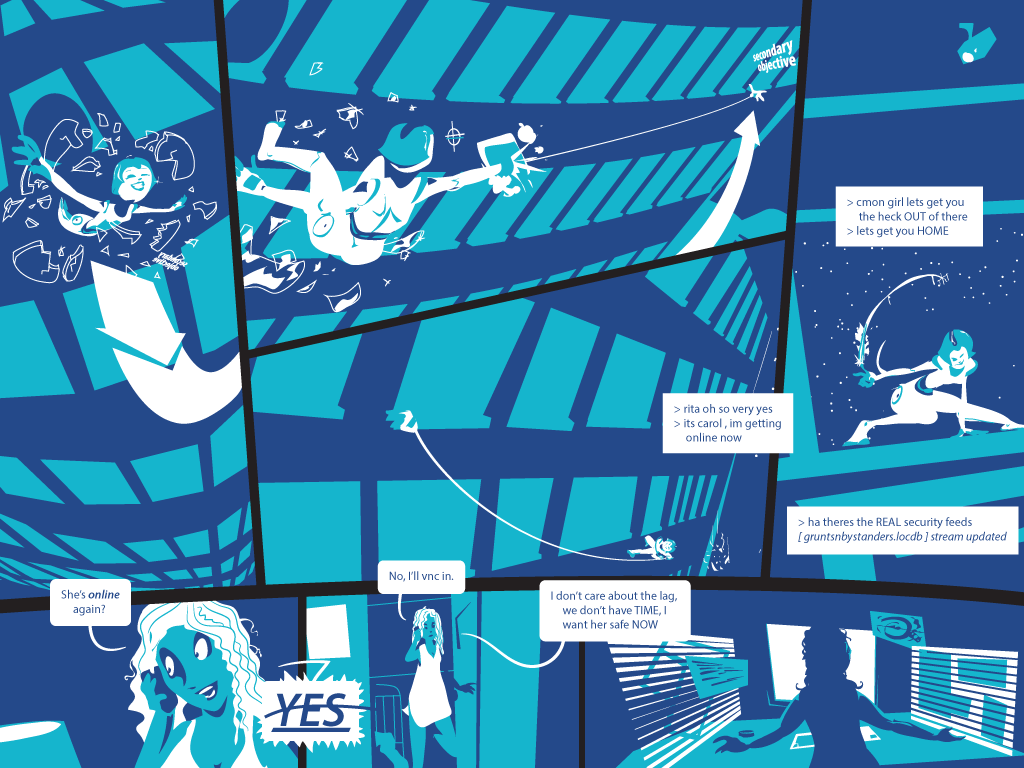
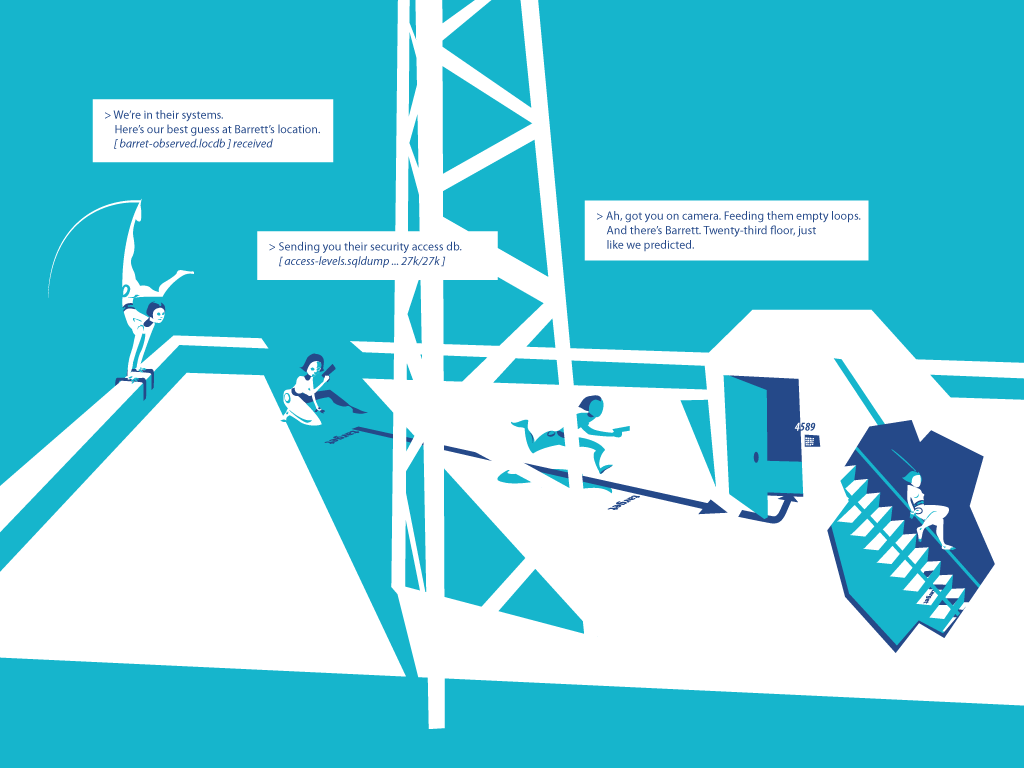
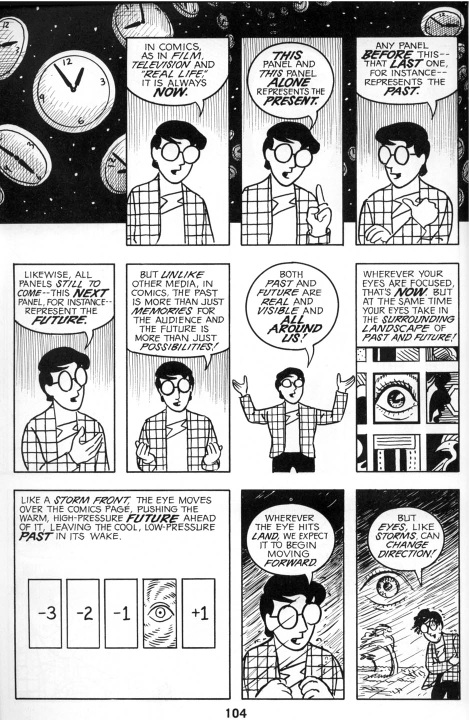

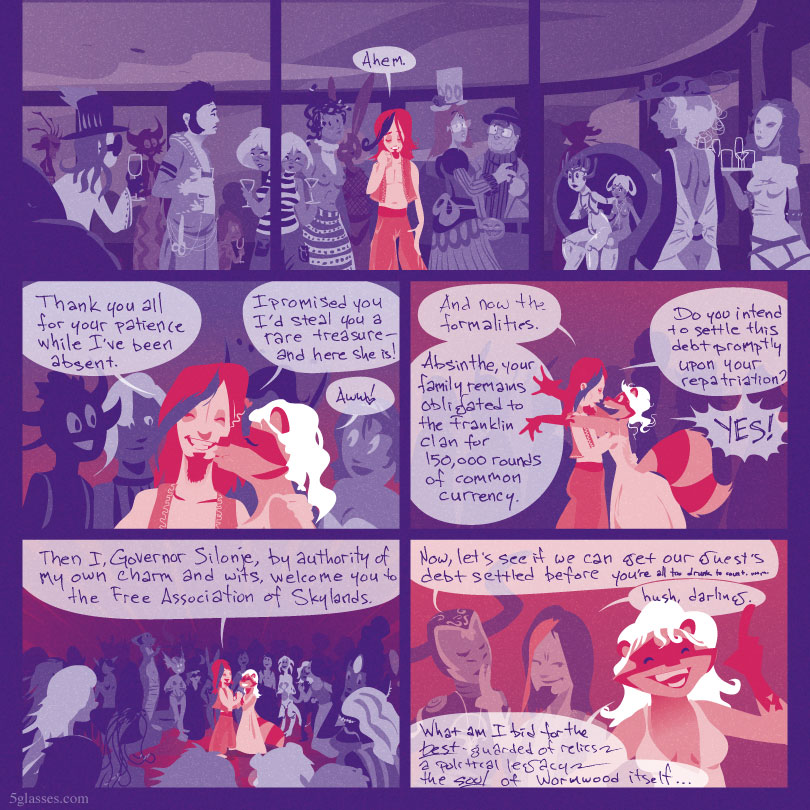
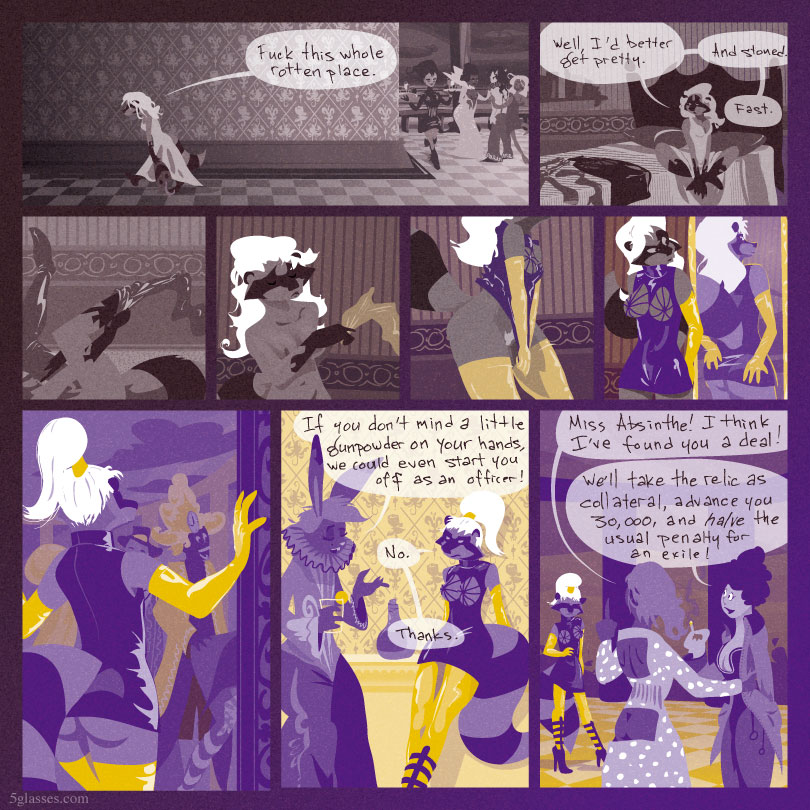
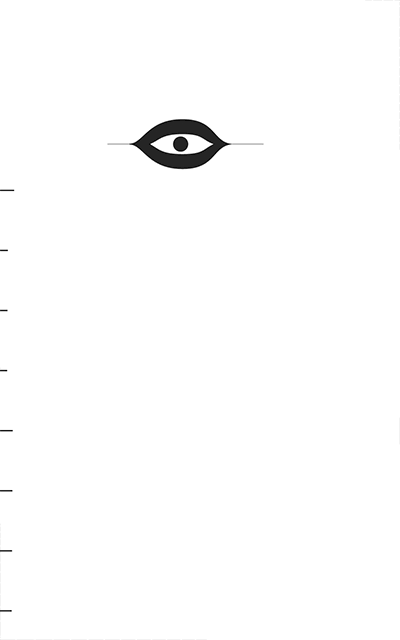
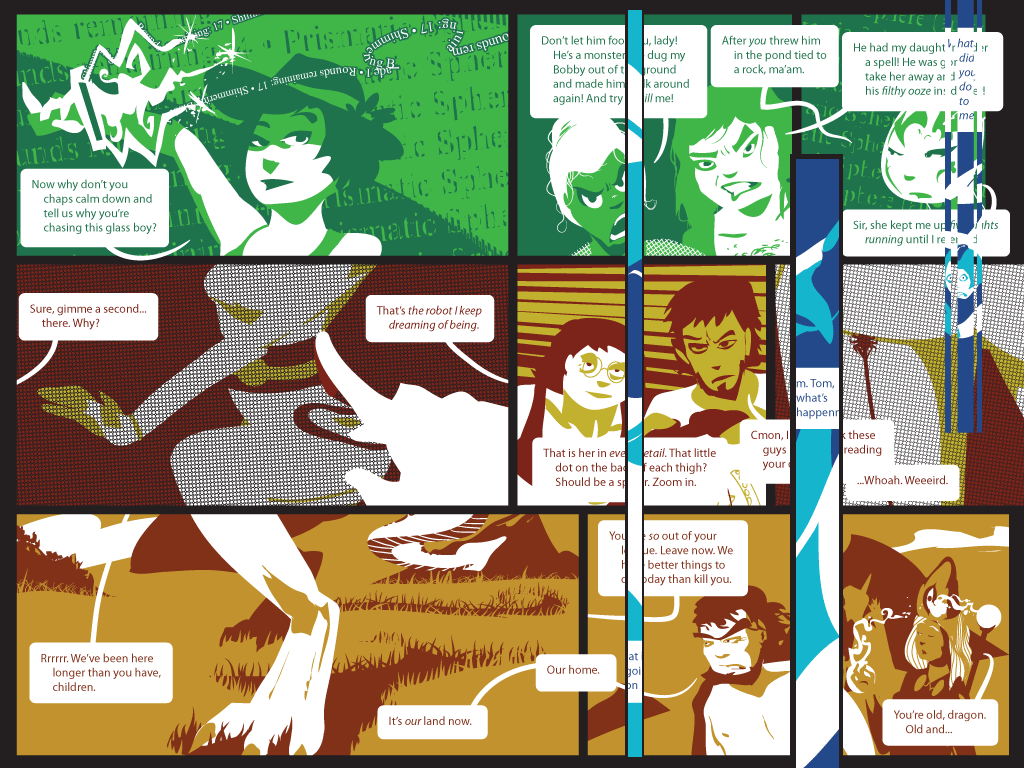
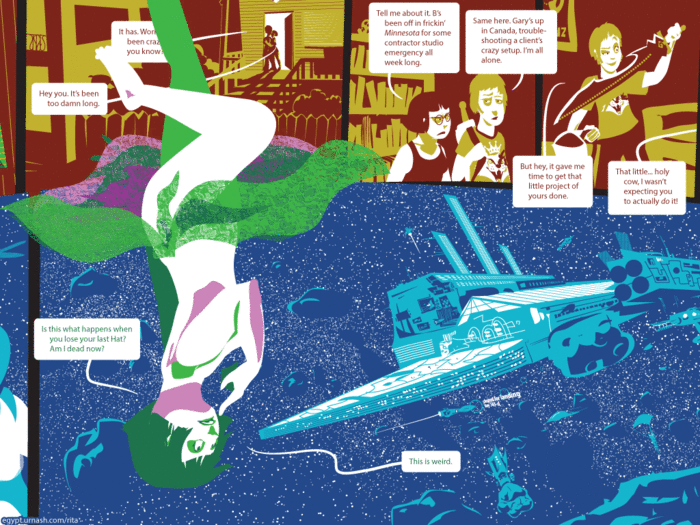
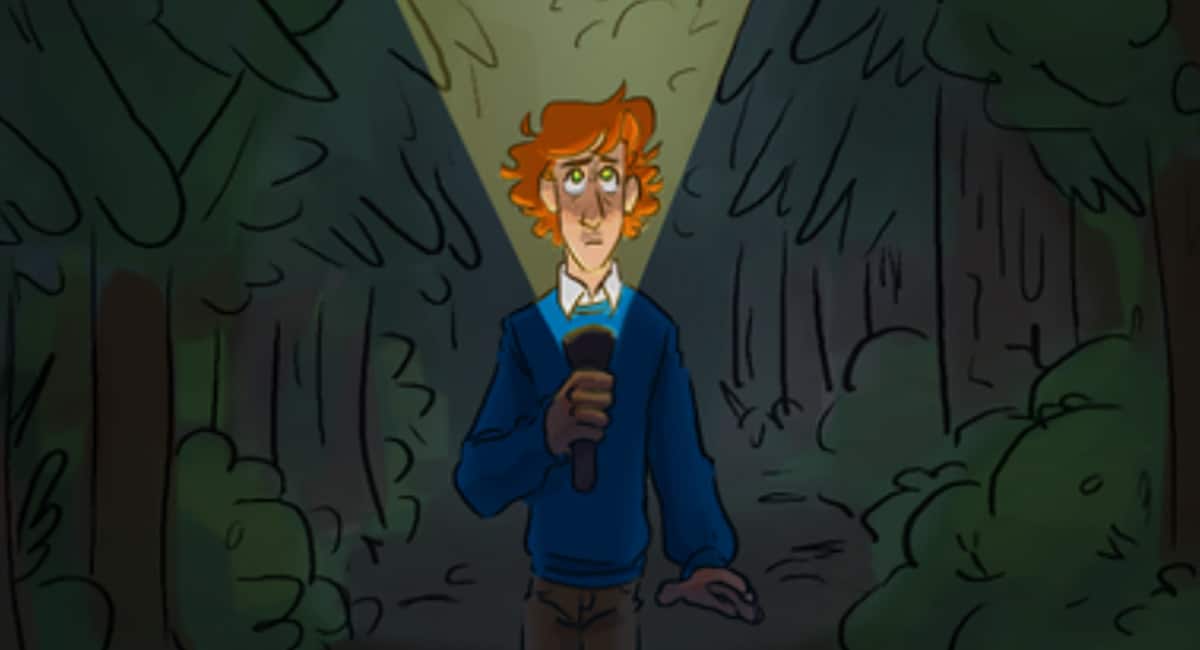
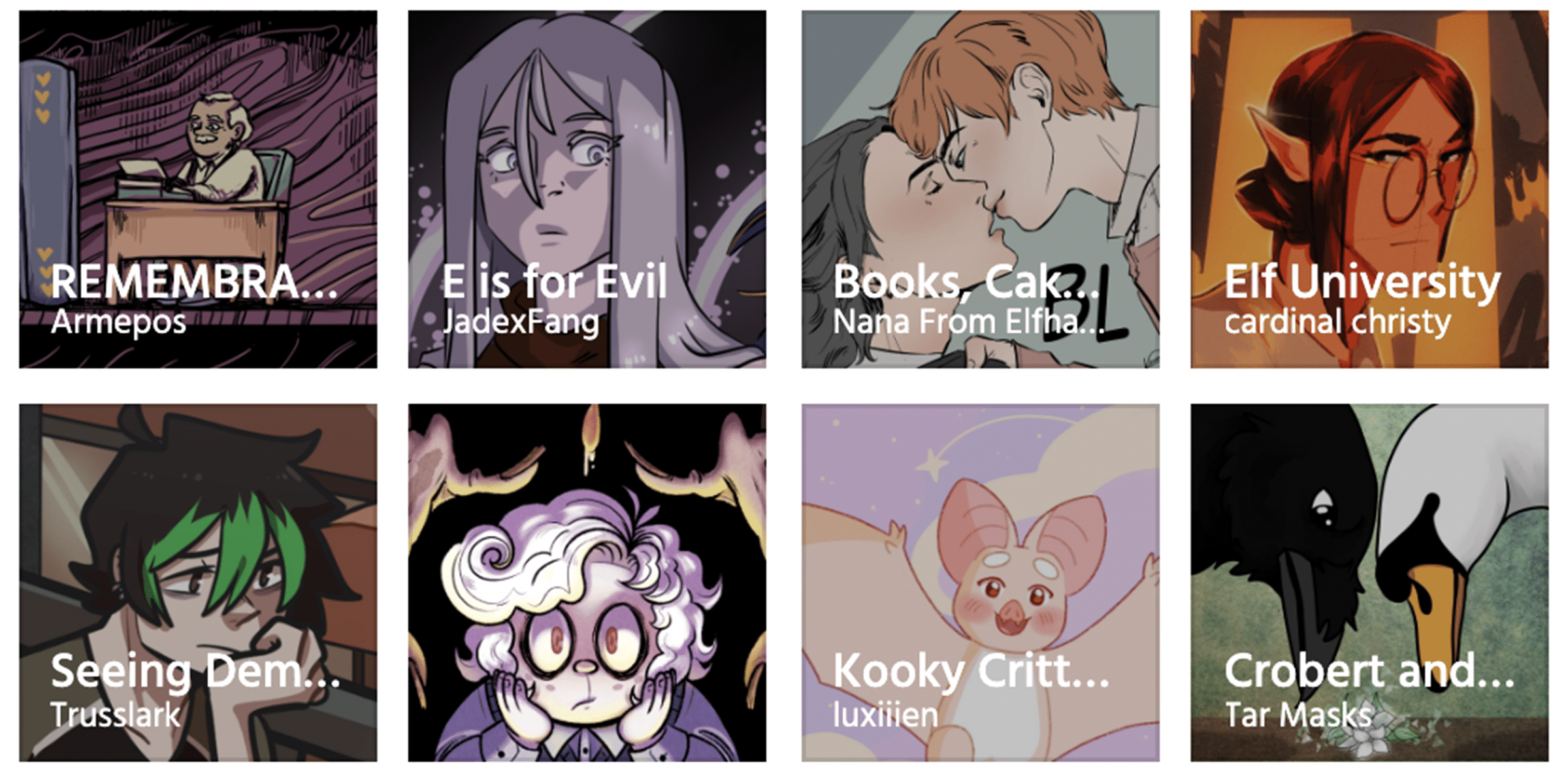

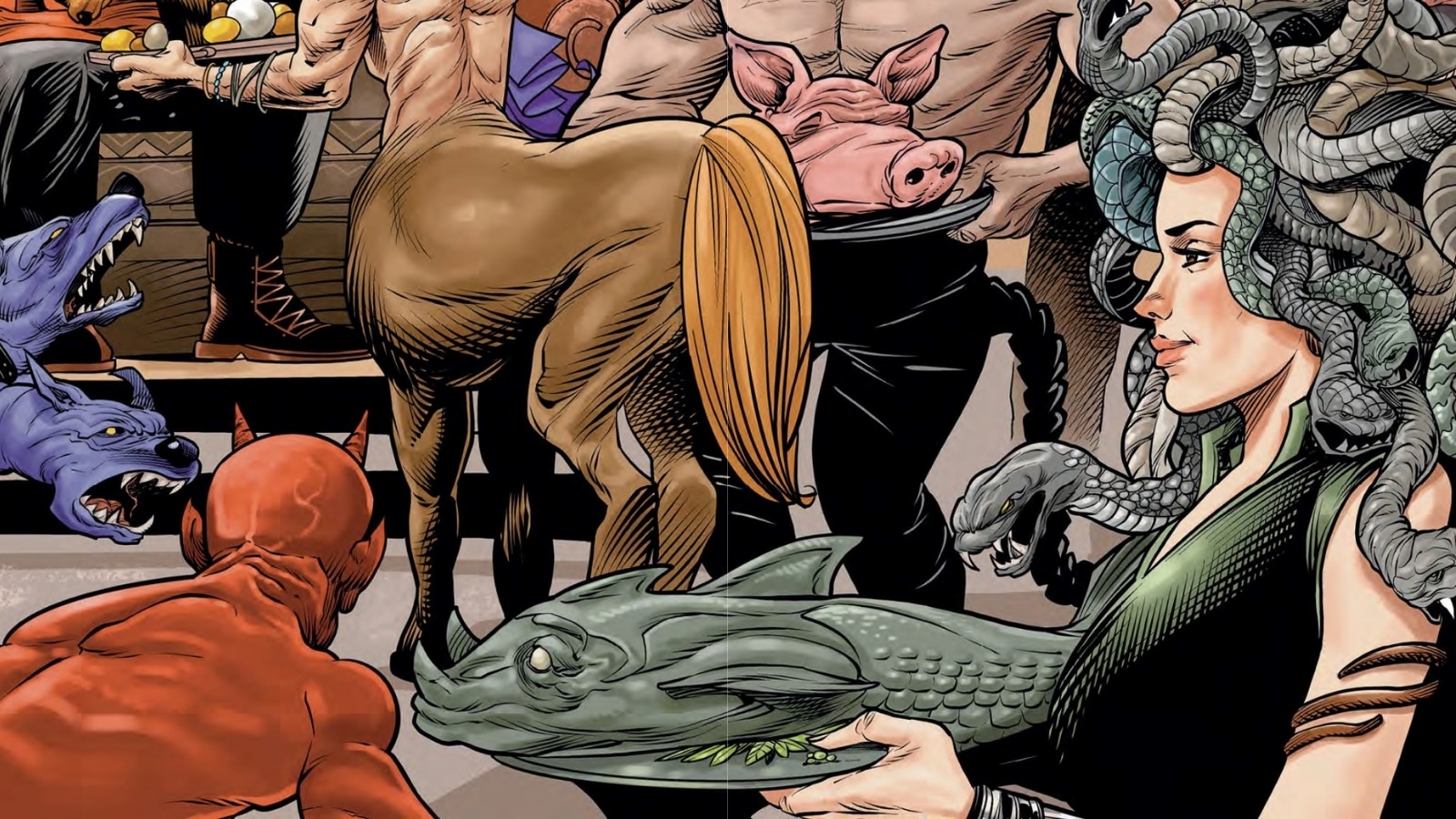


Comments are closed.